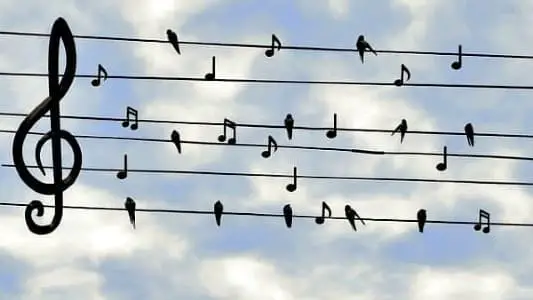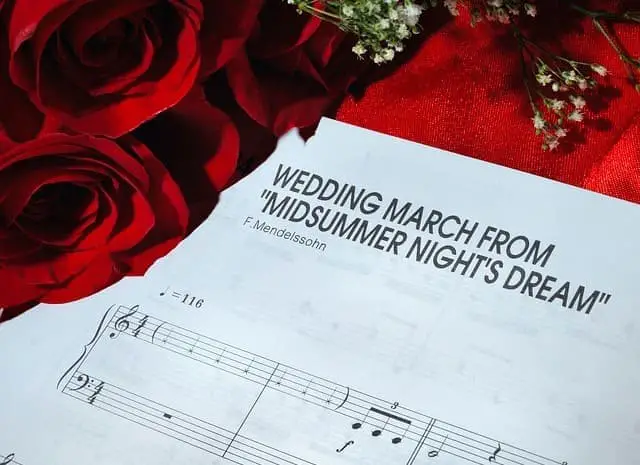- Home
- Basic Piano Theory
- Music Pitch
What is Meant by Music Pitch?
This article may contain compensated links. Please read the disclosure for more info.
Pitch in Music and Why it's Important
Music pitch means how high or how low a note is. Not how loud or soft it is.
But how exactly does a high or low pitched note sound? And how is it written with a musical staff and clef?
Learn more about the pitch in music and how to write it with notation here.
Music Pitch and Melody
On a piano keyboard you can play high pitches to the right, and low pitches to the left.

Women’s voices are generally higher pitched than men's voices, and a flute has a higher pitch than a double bass, for example.
 The Flute has a high music pitch.
The Flute has a high music pitch.A melody is composed of high and low pitches.
When you listen to a melody, you can practice following with your hand to show how it moves, the melodic contour; up for higher pitches and down for lower.
For example, “Twinkle, twinkle little star” could look something like this with hand movements showing how the melody moves with higher and lower pitch:

If you have trouble "staying on pitch" while singing, it means you're singing false! But don't worry- every singer sings off pitch occasionally ;).
Examples of Low and High Music Pitch
Remember that a high pitch in music does not mean a loud sound!
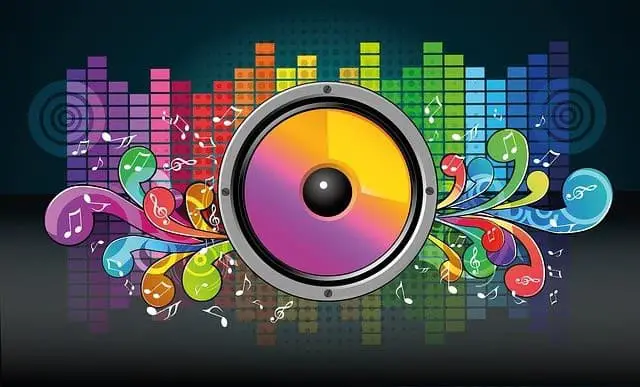
It's common to mix up high or low music pitch with loud or soft sounds.
Here is a video explaining the difference between Pitch or Frequency (high or low sounds) and Volume or Amplitude (loud or soft sounds):
Music Pitch on The Staff
When we write music pitch with music note symbols, we need a music staff:
- A musical staff has five lines and four spaces.
- Notes are written on the lines and in the spaces. They show how the pitch moves up and down.
The same melodic contour from “Twinkle” above could be written on the staff, of course. But, as you know, we use music notes instead to show the exact pitches of the melody and how it moves, up and down:

The Music Clefs Tell Us Pitch Too
To tell the exact music pitch, we also need music clefs. These are the symbols in the beginning of the staff that show if the music pitch of the melody is in a higher or a lower range.
The two most common clefs are the Treble and the Bass. (Treble means high pitch, and bass means low pitch.)
The Treble Clef

Where are the high pitched notes written in a stave?
The high pitched notes are written on a treble staff, a staff with a treble or G clef. The higher the pitch in music, the higher the note on the staff. The name of the staff used for higher pitches is Treble Staff.
This staff is called a “Treble staff” and the clef also show the exact location of where the note treble G is.
The Bass Clef

A Bass Clef, or an F Clef, is used for lower (bass) pitched notes.
This is called a “Bass staff”. The clef also shows where the bass F note is.
Very High or Very Low Pitch in Music
If the music pitch continues "outside" the staff, either above or below, we use ledger lines.
Like this:

But it becomes harder to read when there are too many ledger lines. So, then we can use the symbol 8va. (Octava)
- If placed above the staff, (8va) means to play an octave higher than written. If placed below the staff, (8vb) (Octava Bassa) means to play an octave lower than written.
- Two octaves higher or lower are marked similarly with 15ma and 15mb.
Written Pitch = Notes
Pitches are named after the first seven letters of the alphabet:
A B C D E F G
This pattern is repeated for a higher pitch or backward for a lower and lower pitch. Another way of naming the different pitches is by using syllable names:
Do Re Mi Fa Sol La Si (Ti)
Here you can see the 7 basic notes (white keys on a piano) on the treble staff:
 From lowest to highest pitch: C,D,E,F,G,A,B,C or Do, Re, Mi, Fa, Sol, La Si/Ti and Do.
From lowest to highest pitch: C,D,E,F,G,A,B,C or Do, Re, Mi, Fa, Sol, La Si/Ti and Do.Accidentals: Sharps and Flats
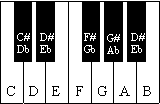
Musical pitches can also be altered a half step higher or lower with the help of accidentals: sharps (#) and flats (b).
On a piano keyboard, you can see the raised or lowered pitches as the black keys.
12 Pitch Classes
All in all, there are 12 different "pitch classes" in the western music tradition. On a piano, you can see them as 7 white and 5 black keys.
Each pitch is a semitone apart, and this pattern is repeated higher and lower.
The easiest way to see this is on a piano keyboard. Here you can see how the notes are repeated again and again:
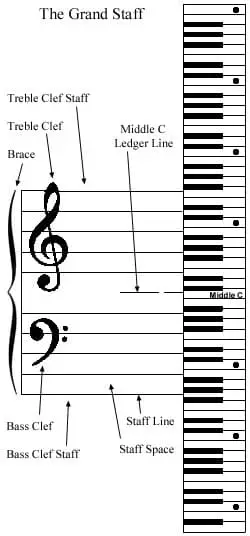
Pitch Star With The 12 Music Pitches
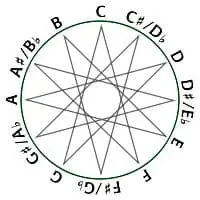
In this musical star, you can see all the 12 chromatic pitches (in Western music theory) organized in a circle of semitones.
Clockwise the pitch gets higher by semitones or half steps, and counter-wise it gets lower.
Inside the star are lines that connect the pitches to show the relationship they have with each other. (It shows the relationship between the first note of a scale (Tonic), the fourth (Sub-dominant), and the fifth (Dominant).
What Is Concert Pitch?
When tuning an instrument, the pitch is adjusted so that it sounds “right”.

How high or low a music pitch sounds depends on how fast or slow something vibrates.
By changing the number of vibrations, or sound wave cycles per second, called Hertz (Hz), the pitch will change.
To put it simpler, by stretching a string, for example, the sound (when you pluck it) gets higher (smaller and faster vibrations). And when loosening the string, the sound gets lower (larger, slower vibrations).
“Concert pitch” is the commonly agreed tuning of the note A, as vibrating exactly 440 sound wave cycles per second (440 Hz). Any instruments tuned this way are tuned in concert pitch. Other instruments that do not have the same tuning, are transposed.
For example; a piano plays the note C. This is a real C. A trumpeter plays a "C". But instead, it sounds like a Bb!
To avoid confusion at rehearsals with transposed instruments, you have to define whether the written music should be played as written or if the concert pitch should be used.
